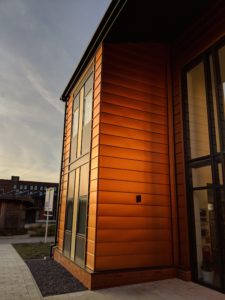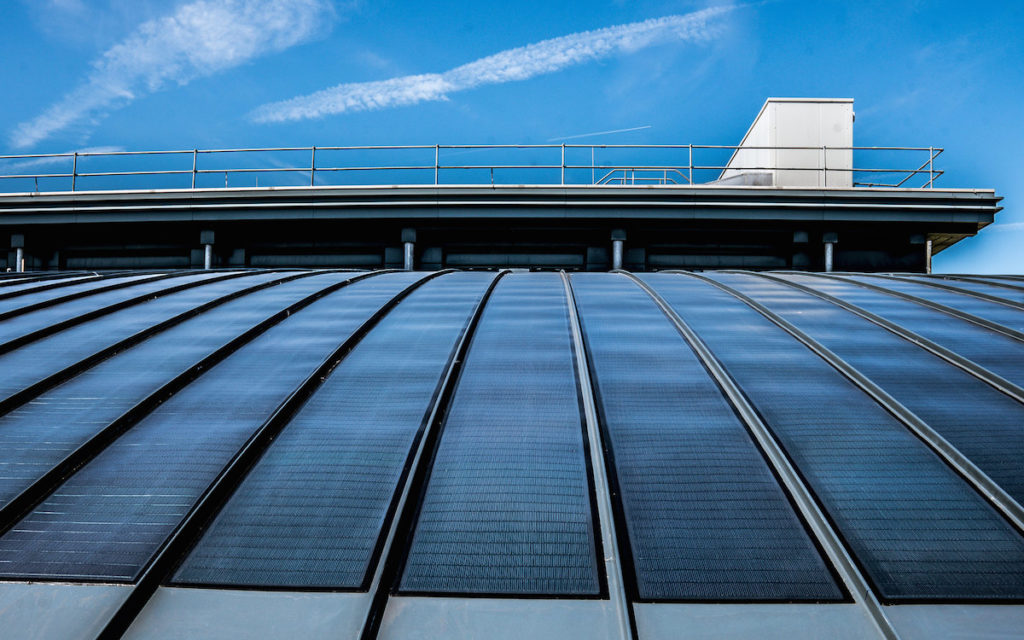What is an Active Building? Simon McWhirter, Head of Engagement, Active Building Centre reveals all.
2020 is now upon us, heralding the start of a new decade, with a new government at the helm. Thankfully, the political winds currently continue to blow in a favourable direction for sustainability and this presents myriad opportunities for housebuilders and developers. Indeed, with sweeping political commitments in support of buildings and infrastructure, there is a linked drive to deliver quality housing at a rapid pace.
There is a wide range of suitable technologies already available and deployed in the market, from innovative energy-generating materials to adaptive storage systems. However, what’s needed industry-wide is a step change in thinking from individual product solutions, to a systems-based approach – one which combines best-in-class low carbon technologies with smart, responsive controls and intelligent building management systems. ‘Active Buildings’ sit squarely in that space. It’s a concept which could profoundly change the way we develop our homes and property, as it can significantly benefit the environment through reduced carbon impacts, while minimising financial energy costs
What is an Active Building? As above, in essence it’s a direct progression, or more appropriately evolution, from a focus on singular innovative technology solutions, to systems-thinking, holistic sustainable construction. These buildings effectively empower the occupant or building owner by giving the building a decision-making role. Renewable energy generation and storage tech is governed by AI software-driven tools that lets the buildings know whether it’s optimal to use, store or trade the energy it generates.
Importantly, it’s a low carbon option which has the potential to ease pressure on the National Grid, adding resilience into the wider system by delivering more generation capacity, aggregated at scale, with the ability to support the energy system at times of stress. This is essential as we move to non-fossil fuel generated electricity and our energy consumption rapidly increases.
Beyond the building envelope
The advantages Active Buildings offer go far beyond the immediate financial benefits homeowners and landlords will see through reductions in energy bills.
The intention is that, as well as heating and powering appliances, the building would also fuel occupants’ electric vehicle (EV) adoption. This is a welcome and, given the current levels of associated infrastructure, necessary solution.
Currently, the majority of the UK’s homes and property are not properly equipped to support EV use and are not designed with this in mind. One way to rapidly change this is to start incorporating Active solutions into new builds. It’s a low-or-no emission solution which should be welcomed in line with the industry-wide push toward net-zero carbon by 2050.
To demonstrate the potential, our Active Building Centre founder Prof. Dave Worsley has been able to cover over 20,000 miles of road in 12 months solely using electricity generated from an Active Building on our test site at Swansea University. It’s quite an achievement, highlighting a huge potential saving for the homeowner occupants of Active Buildings. It’s a way in which housebuilders and developers can significantly add long-term, sustainable value into the property.
The case for Active Buildings is a compelling one, and is becoming stronger as policy decision makers begin to embed it into their thinking. The societal benefits are obvious, ranging from minimised fuel poverty to improved air quality.
At the Active Building Centre, we are constantly developing new and innovative solutions which will define the energy efficient, self-sufficient homes of the future. Through adopting an empirical, data-led methodology we have been able to directly observe the possibilities of Active Buildings, refining our processes and systems to offer housebuilders and developers the best advice possible.
The UK property sector has the capability and capacity to be early adopters of this construction model, becoming trailblazers in the collective mission to achieve our zero-carbon targets as we aim to deliver a more sustainable society.
 The Active Building system was originally pioneered by the government-backed SPECIFIC in 2015. At a base level, Active Buildings comprise six core principles:
The Active Building system was originally pioneered by the government-backed SPECIFIC in 2015. At a base level, Active Buildings comprise six core principles:
- Building fabric and passive design – an integrated engineering and architectural design approach. This includes consideration of orientation and massing, fabric efficiency, natural daylighting and natural ventilation. Designed for occupant comfort and low energy by following passive design principles.
- Energy efficient systems – intelligently controlled and energy efficient systems to minimise loads, including HVAC, lighting and vertical transportation. This is complemented by data capture via inbuilt monitoring & standard naming schemas to enable optimisation and refinement of predictive control strategies.
- On-site renewable energy generation – renewable energy generation is incorporated where appropriate. Renewable technologies should be selected holistically, given site conditions and building load profiles.
- Energy storage – thermal and electrical storage are considered to mitigate peak demand, reducing the requirement to oversize systems and enabling greater control.
- Electric vehicle integration – where appropriate Active Buildings should integrate electric vehicle charging. As technology develops, bi-directional charging will allow electric vehicles to deliver energy to buildings as required.
- Intelligently manage integration with micro-grids & national energy network – in addition to intelligent controls, Active Buildings must manage their interaction with wider energy networks (e.g. through demand side response, load shifting & predictive control methods).



